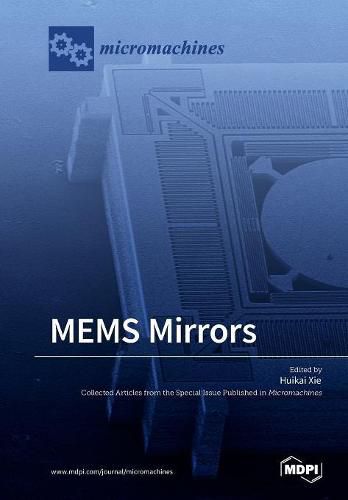Readings Newsletter
Become a Readings Member to make your shopping experience even easier.
Sign in or sign up for free!
You’re not far away from qualifying for FREE standard shipping within Australia
You’ve qualified for FREE standard shipping within Australia
The cart is loading…






This title is printed to order. This book may have been self-published. If so, we cannot guarantee the quality of the content. In the main most books will have gone through the editing process however some may not. We therefore suggest that you be aware of this before ordering this book. If in doubt check either the author or publisher’s details as we are unable to accept any returns unless they are faulty. Please contact us if you have any questions.
MEMS mirrors can steer, modulate and switch light, as well as control the wavefront for focusing or phase modulation. MEMS mirrors have found enormous commercial success in projectors, displays and fiberoptic communications. Micro-spectrometers based on MEMS mirrors are starting to appear in the consumer market. There are also many breakthroughs in applying MEMS mirrors for endoscopic imaging. Equally excitingly, a new wave of opportunities for MEMS mirrors is coming up, for example, micro-LiDAR for autonomous driving and robotics, optical cross connect (OXC) for cloud data centers, and optical scanners for virtual reality/augumented reality, just to name a few. Of course, there are a number of big challenges that researchers and engineers must overcome to fully utiltize MEMS mirrors’ potential: modeling and control are inherently complex due to the multiphysics, multi-DOF and nonlinear nature of the microactuators for MEMS mirrors; reliability is always a huge hurdle for commercilization; and the tradeoffs among the speed, aperture, and scan range are often overwhelming. Accordingly, this Special Issue seeks to showcase research papers, short communications, and review articles that focus on: (1) novel designs, fabrication, control, and modeling of MEMS mirrors based on all kinds of actuation mechanisms; and (2) new developments of applying MEMS mirrors of any kind in consumer electronics, optical communications, industry, medicine, agriculture, space, or defense.
$9.00 standard shipping within Australia
FREE standard shipping within Australia for orders over $100.00
Express & International shipping calculated at checkout
This title is printed to order. This book may have been self-published. If so, we cannot guarantee the quality of the content. In the main most books will have gone through the editing process however some may not. We therefore suggest that you be aware of this before ordering this book. If in doubt check either the author or publisher’s details as we are unable to accept any returns unless they are faulty. Please contact us if you have any questions.
MEMS mirrors can steer, modulate and switch light, as well as control the wavefront for focusing or phase modulation. MEMS mirrors have found enormous commercial success in projectors, displays and fiberoptic communications. Micro-spectrometers based on MEMS mirrors are starting to appear in the consumer market. There are also many breakthroughs in applying MEMS mirrors for endoscopic imaging. Equally excitingly, a new wave of opportunities for MEMS mirrors is coming up, for example, micro-LiDAR for autonomous driving and robotics, optical cross connect (OXC) for cloud data centers, and optical scanners for virtual reality/augumented reality, just to name a few. Of course, there are a number of big challenges that researchers and engineers must overcome to fully utiltize MEMS mirrors’ potential: modeling and control are inherently complex due to the multiphysics, multi-DOF and nonlinear nature of the microactuators for MEMS mirrors; reliability is always a huge hurdle for commercilization; and the tradeoffs among the speed, aperture, and scan range are often overwhelming. Accordingly, this Special Issue seeks to showcase research papers, short communications, and review articles that focus on: (1) novel designs, fabrication, control, and modeling of MEMS mirrors based on all kinds of actuation mechanisms; and (2) new developments of applying MEMS mirrors of any kind in consumer electronics, optical communications, industry, medicine, agriculture, space, or defense.